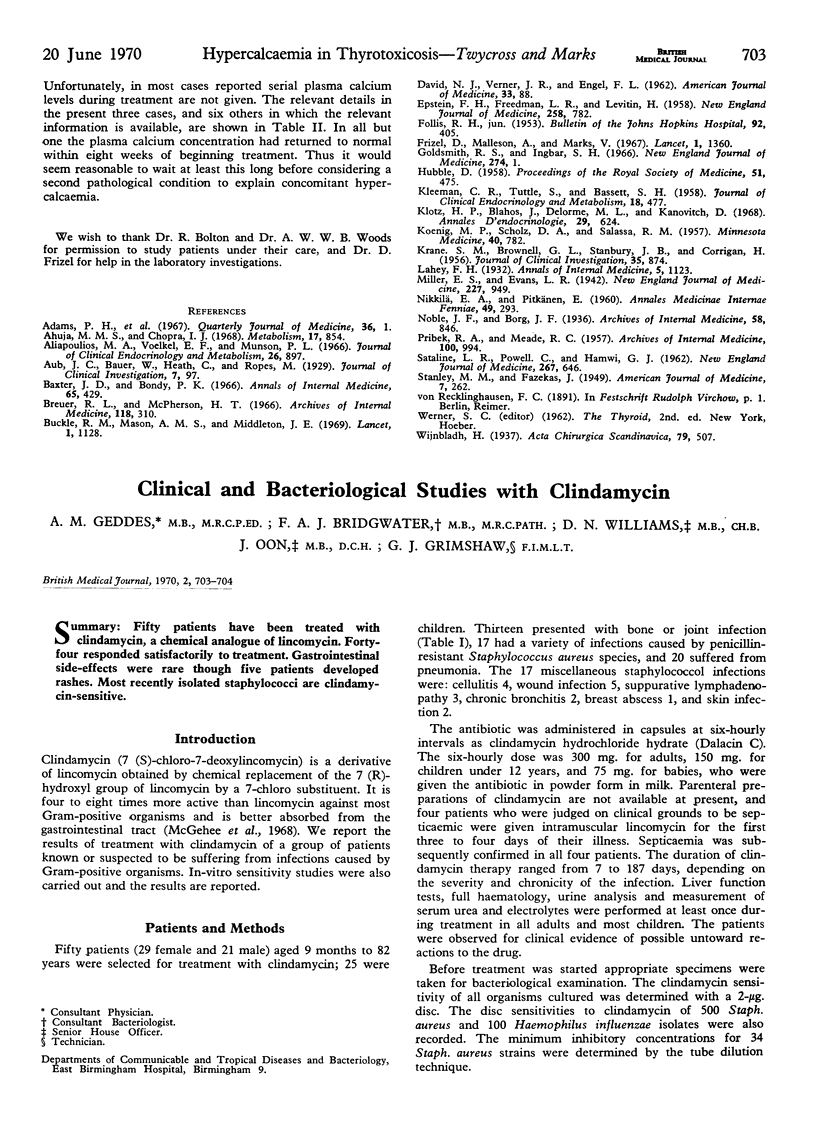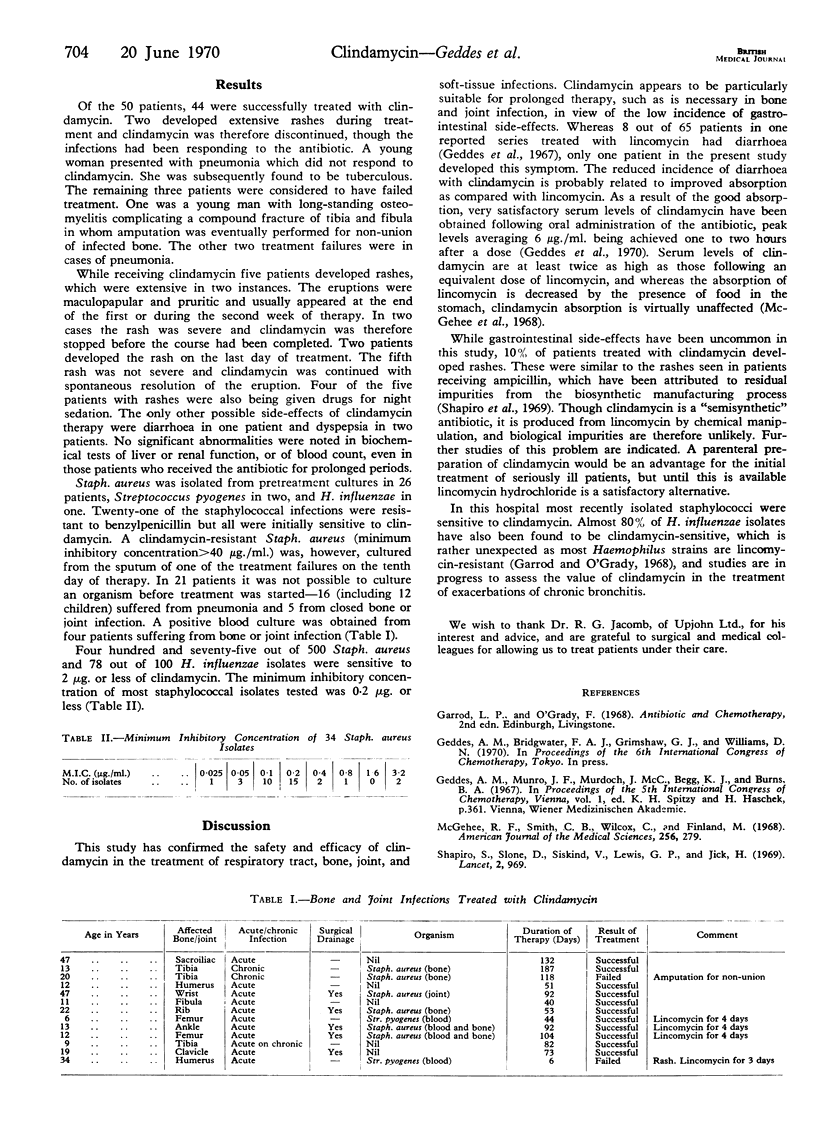Abstract
Fifty patients have been treated with clindamycin, a chemical analogue of lincomycin. Forty-four responded satisfactorily to treatment. Gastrointestinal side-effects were rare though five patients developed rashes. Most recently isolated staphylococci are clindamycin-sensitive.
Full text
PDF

Selected References
These references are in PubMed. This may not be the complete list of references from this article.
- McGehee R. F., Jr, Smith C. B., Wilcox C., Finland M. Comparative studies of antibacterial activity in vitro and absorption and excretion of lincomycin and clinimycin. Am J Med Sci. 1968 Nov;256(5):279–292. doi: 10.1097/00000441-196811000-00002. [DOI] [PubMed] [Google Scholar]
- Shapiro S., Siskind V., Slone D., Lewis G. P., Jick H. Drug rash with ampicillin and other penicillins. Lancet. 1969 Nov 8;2(7628):969–972. doi: 10.1016/s0140-6736(69)90535-2. [DOI] [PubMed] [Google Scholar]


